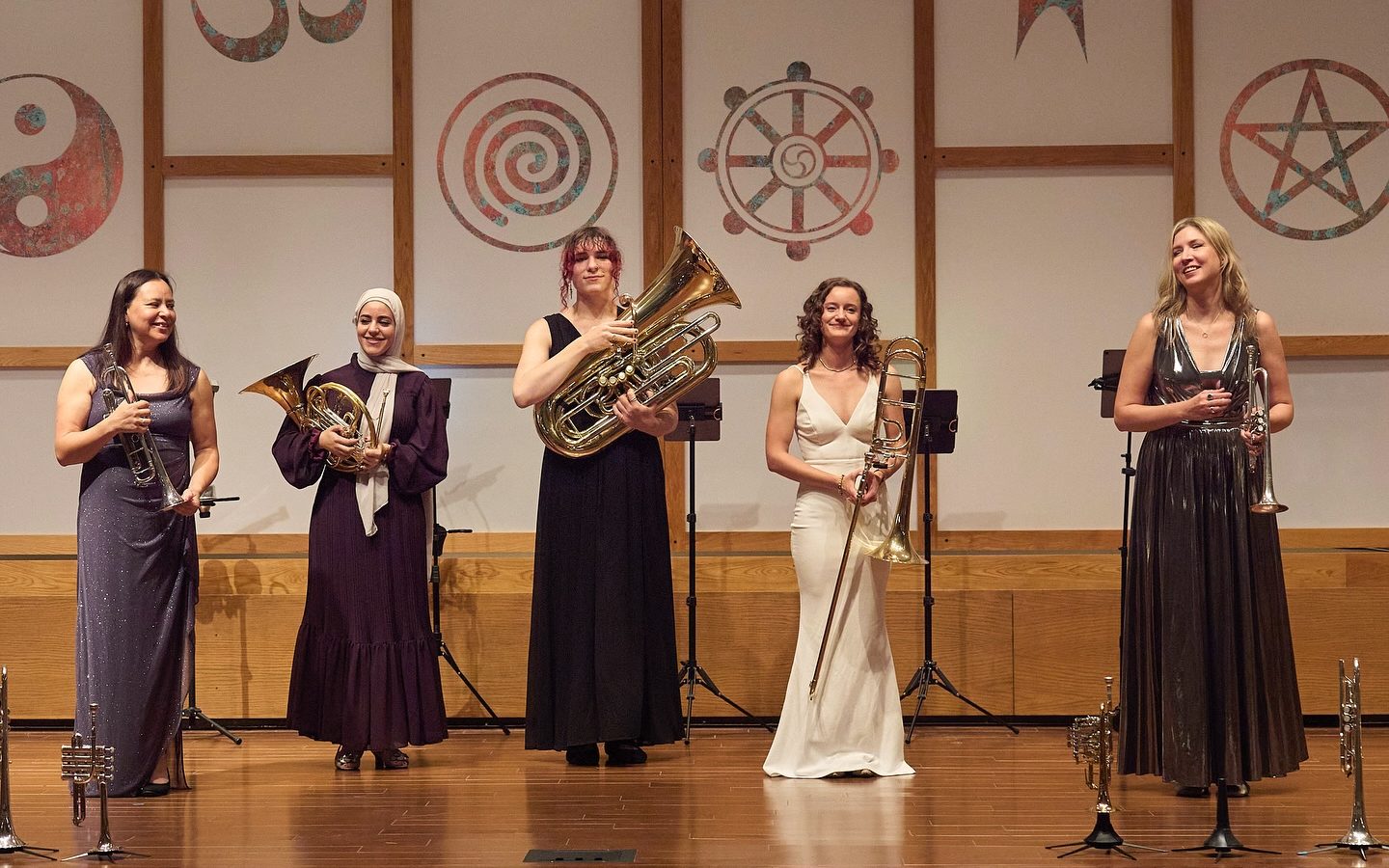by Stephanie Manning

The “Prelude” from Edvard Greig’s Holberg Suite whisked listeners away to Norway, with a melody surely familiar to many. It was extra familiar to the brass quintet themselves, who launched into their opening number without sheet music. Playing memorized is part of the group’s trademark, and they smoothly alternated using music and no music throughout the evening. Either way, the wide-ranging program had those at West Shore Unitarian Universalist Church spellbound.
Trumpet players Mary Elizabeth Bowden and Raquel Samayoa, horn player Layan Atieh, trombonist Lauren Casey-Clyde, and tuba player Robyn Black sounded equally comfortable in Romantic and contemporary repertoire, flipping between both with practiced ease. The program was frontloaded with the more traditional offerings, like “Sempre Libera” from Giuseppe Verdi’s La Traviata, where Bowden’s G trumpet beautifully embodied leading lady Violetta opposite Atieh’s crooning Alfredo.
Later, audience members traded looks of amazement at Raquel Samayoa’s technical trumpet wizardry in her showpiece, Grigoras Dinicu’s Hora Staccato. And the high-energy romp of Franz Liszt’s Hungarian Rhapsody No. 2, confidently announced by big glissandos from Lauren Casey-Clyde, created a carnival atmosphere just before intermission.
Casey-Clyde’s trombone was also the engine behind Jeff Scott’s Showcase, setting up the foundational rhythm that everyone got a turn to dance on top of. Robyn Black confidently wielded her tuba as a melody instrument in its own right, both here and in Kevin Day’s darker “Lunaire” from Fantasia III.
Day’s piece did begin to strain the venue’s resonance a little bit, as did Kevin McKee’s Vuelta del Fuego, though this was only a minor inconvenience when faced with the latter’s infectious energy.
Most effective in the space was Rene Orth’s Leaguered in Fire, Lagooned in Gold, which sounded like a meditative look out over a windy bay. The five players carefully shaped the piece’s textural and technical demands.
The whooshing air effect created by blowing through their instruments without mouthpieces — a technique often more interesting in concept than in execution — was shockingly effective here, as well as strangely calming. The group added to that lulling sensation by creating a ripple effect of movement towards the end, gently twisting their bodies in small arcs before reversing the motions.
“That’s all the dancing we’ll be doing tonight,” Atieh joked, capping off her comedic commentary. Catherine McMichael’s “Virgo, the Lover of Justice” from Asteria was indeed more serious, a slow yet hopeful work that seems to promise that the justice Virgo seeks will be delivered.
Still, there was plenty of musical dancing to be found in the perpetual motion of Reena Esmail’s “Tuttarana” from Khirkiyaan (Windows): Three Transformations for Brass Quintet. And none exemplified this more than Anthony DiLorenzo’s Go, the high-octane finale where the players turned their bells towards the audience. We wouldn’t have it any other way.
Published on ClevelandClassical.com November 21, 2024.
Click here for a printable copy of this article



